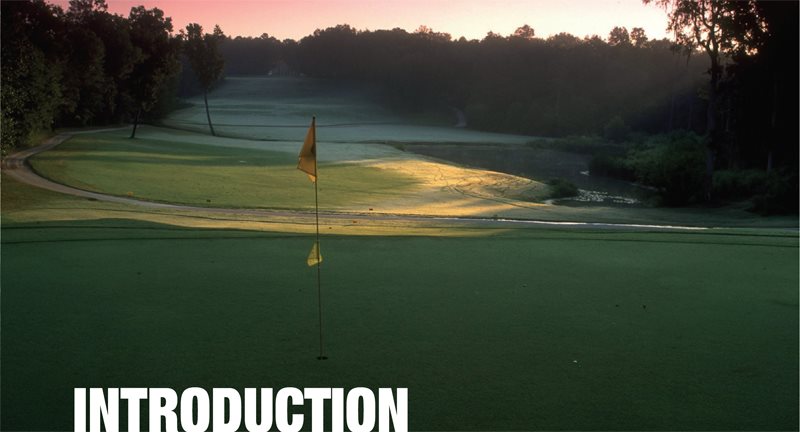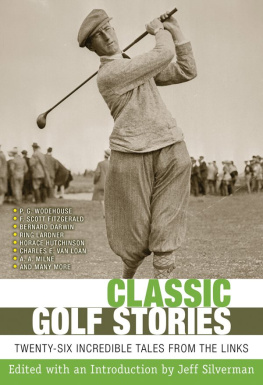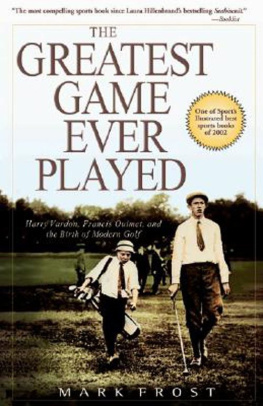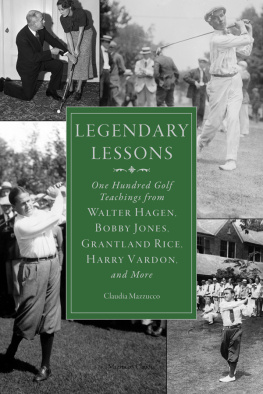Also edited by Jeff Silverman:

Bernard Darwin on Golf
Classic Baseball Stories
The First Chapbook for Foodies
The First Chapbook for Golfers
The Greatest Baseball Stories Ever Told
The Greatest Boxing Stories Ever Told
The Greatest Golf Stories Ever Told
Lardner on Baseball
Lardner on War
Copyright 2012 by Jeff Silverman
All Rights Reserved. No part of this book may be reproduced in any manner without the express written consent of the publisher, except in the case of brief excerpts in critical reviews or articles. All inquiries should be addressed to Skyhorse Publishing, 307 West 36th Street, 11th Floor, New York, NY 10018.
Skyhorse Publishing books may be purchased in bulk at special discounts for sales promotion, corporate gifts, fund-raising, or educational purposes. Special editions can also be created to specifications. For details, contact the Special Sales Department, Skyhorse Publishing, 307 West 36th Street, 11th Floor, New York, NY 10018 or .
Skyhorse and Skyhorse Publishing are registered trademarks of Skyhorse Publishing, Inc., a Delaware corporation.
Visit our website at www.skyhorsepublishing.com.
10 9 8 7 6 5 4 3 2 1
Library of Congress Cataloging-in-Publication Data is available on file
ISBN: 978-1-61608-381-6
Printed in China
For Guy Cary,
the most classic golf story I know
CONTENTS
The Praise and Origin of Golf
SIR W. G. SIMPSON
The Mystery of Golf
ARNOLD HAULTAIN
The Chicken; or, My First Introduction to the Ancient Game of Golf
(A Trifle after The Raven)
S. F. OUTWOOD
Miss Carringtons Professional
M. GERTRUDE CUNDILL
An Inland Voyage
A. A. MILNE
A Method of Play
J. H. TAYLOR
Even Threes
OWEN JOHNSON
Good Resolutions
BERNARD DARWIN
The Humorous Side of Golf
A. W. TILLINGHAST
A Novel Golfing Match
A. NIBLICK
A One-Ball Match
GERALD BATCHELOR
Dormie One
HOLWORTHY HALL
Mathematics for Golfers
STEPHEN LEACOCK
The Science of Golf
ANONYMOUS
Hit the Ball: A Valuable Lesson of What Concentration Really Means
EDDIE LOOS
A Lesson in Golf
ANONYMOUS
A Mixed Threesome
P. G. WODEHOUSE
Mr. Dooley on Golf
FINLEY PETER DUNNE
A Caddys Diary
RING LARDNER
How I Began to Play Golf
FRANCIS OUIMET
Shush!!! An Authority on Athaletics Makes a Suggestion
RING LARDNER
Etiquette and Behaviour
HORACE HUTCHINSON
Golf for Duffers
SIR HENRY RIDER HAGGARD
Gentlemen, You Cant Go Through!
CHARLES E. VAN LOAN
Aberdovey
BERNARD DARWIN
Winter Dreams
F. SCOTT FITZGERALD
Why Golf is Art and Art is Golf
We have not far to seek
So much depends upon the lie,
So much upon the cleek.
Rudyard Kipling
From Verses on Games

E ssentially, every time we set out to play golf, we set out in search of untold stories. Not every one will be a classic, of course, unless we can expand our fairways to include absurdity, burlesque, and all the other insanely hysterical things we human beings are capable of inflicting on a golf ball. Still, regardless of how well or not so well we play the game, a round of golf is plot in a nutshell with a surlyn cover. It begins, as stories do, with infinite possibilities and hopes for a happy ending. Then, along the way, all hells likely to break loose. Nature taunts us. Luck rewardsor killsus, the difference determined by silly millimeters. Hazards await us. Penalties are exacted on us. Despair moves in. Elation moves it out. Despair moves back in again. Character is tested. True character is revealed.
I remember, in college lit classes, the way professors would proudly march out the observation somewhere in a lecture that In literature, as in life... I would zone out immediately. The two are pretty much the same, I thought; after all, whats literature if not lifeor at least a few pieces of itrecorded on a page in the symbols we use to communicate? And whats golf, then, if not the most maddening endeavor ever devised by evil Druids to play out everything life can throw at us over eighteen holes of varying length and difficulty? Golf and literature go hand in hand.
Its the very nature of the gamehow we handle what golf confronts us withthats led so many superb writers over so long a time to wade into it, and retrieve so many splendid stories. Some of whichto suit the demands of the title attached to this collectionare, indeed, classic.
So what makes a golf story a classic golf story? A number of things, really, but, ultimately, I think, it comes down to this: Even if the language is a bit thick or floral by contemporary standards, even if certain aspects of the game seem a little arcane, even if the manners are as dead as the dodo and the atmosphere seems somewhat out of whack with ours, they can hold up a mirror that still offers a true reflection of who we areas men, as women, and as golfers. In short, they stand the test of timeall in this volume have been standing for at least eighty years, with several still upright into their third centuryand they continue to speak to us.
According to the Oxford English Dictionary, the word golf was originally teed up in the written language in the 1450s, and by the mid-seventeenth century, it had bounced its way into poetry. The games first appearance in fiction came in 1771, with a brief aside on the diversion called Golf in the fields called the Links of Edinburgh in Tobias Smolletts novel The Expedition of Humphry Clinker. By the second half of the nineteenth century, as the game really took off through the British Isles, and sports became more fit subject matter for popular journals directed toward the moneyed, leisure class, golf, quite naturally, began developing a literatureboth fiction and nonof its own. In essence, the game, and writing about the game, began to grow up together.
With golfs arrival on American shores just before the twentieth century, American writers began getting in on the funplaying the game, and writing about it, too. As did their transplanted brethren. In 1892, when golf was still very much a novelty in the New World, Rudyard Kipling, a confirmed hacker, settled in for a few years on an estate in Vermont. One of the first things he did was establish a small course on the property.
Summer and winter alike, hed take his whacks on this makeshift layout of indeterminate par that extended from the meadow beyond his front door right to the edge of the Connecticut River. The Nobel Prize winners sojourn was wonderfully productive. Not only did he write Captains Courageous and the Jungle Books in Vermont, he also invented the red golf ball, allowing him to soldier on with his passionand keep track of his shotseven through the North American snow cover.















